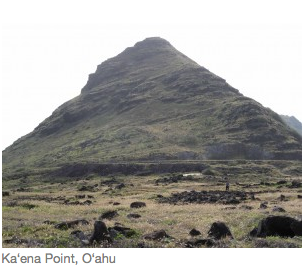
In 1871, Lot Kamehameha, great grandson of the Kamehameha I, proclaimed by royal decree that June 11 would be a known as Kamehameha Day, and every year on this date the people would celebrate the unification of the Hawaiian Islands. June 11 is an arbitrary date, simply a day chosen to remember that a powerful warrior once walked in our midst, one who was not any less brilliant or skilled than any of the great conquerers in world history, and that he brought the Hawaiian Islands under one rule and and that we should celebrate his achievement every year with games and parades.
Before Kamehameha, the Hawaiian Islands were each independent kingdoms that fought back and forth as different rulers endeavored to expand their domains. Chiefs from neighbor islands had always been envious of Oʻahu’s wealth, of our fresh water, our fertile soil, the abundant sea life inhabiting our shores and surrounding ocean. Oʻahu had the highest and some of the most visionary and benevolent chiefs of all the islands, and under them the Kingdom of Oʻahu flourished for centuries, successfully warding off attempted invasions by neighbor island chiefs. Oʻahu was finally conquered in the late 1700’s by Kahekili, a powerful Maui chief and, according to Kameʻeiamoku, father of Kamehameha. He achieved this victory through treachery and a determination to kill whoever got in his way. As invaders and conquerers everywhere do, Kahekili replaced the Oʻahu chiefs and konohiki with his own Maui chiefs who were loyal to him, but who were not particularly good to the new people they now ruled. The Oʻahu chiefs planned a revolt and in turn Kahekili committed genocide, not only of the Oʻahu chiefs but of the men, women and children of Oʻahu as well. Kahekili’s son, Kalanikupule, inherited the Oʻahu Kingdom after his father’s death but lost it to the superior forces of Kamehameha (superior, as in western firearms and military strategies). By this time the population of Oʻahu, including its armies, were decimated, and Kamehamehaʻs bloody victory, which culminated in pushing most of the the remaining Oʻahu warriors over the Nuʻuanu Pali to their deaths, was decisive. Kamehameha then exercised his prerogative as conqueror to replace the Maui chiefs on Oʻahu with the appointment of his own loyal chiefs to positions of power and to distribute the lands as he saw fit. Unlike Kahekili, Kamehameha was much more just towards the people and so they were more accepting of him than they were of their previous conqueror.
Kamehameha descendants became the heirs of Hawaiian lands, which they mostly lost to our next conquerer, the United States, who then installed their own people to rule us. Who is to say what would have happened if Kamehameha had not unified the islands. Maybe the Hawaiian Islands would still be independent to this day, or maybe different islands would be under different flags, like Samoa and American Samoa.
Oʻahu was unified into an island kingdom in the early 1400’s, which is almost 400 years that our island was a nation before we lost our sovereignty to Kahekili. Our Islands became an independent nation under Kamehameha and his descendents for 83 years until we lost our collective sovereignty to America, which has now ruled our islands for 118 years. And so on Kamehameha Day I will celebrate the great chiefs of Oʻahu, who include Māweke, Mā’ilikukahi, Kūkaniloko, Kakuhihewa and their descendants, all of whom who are long gone.

